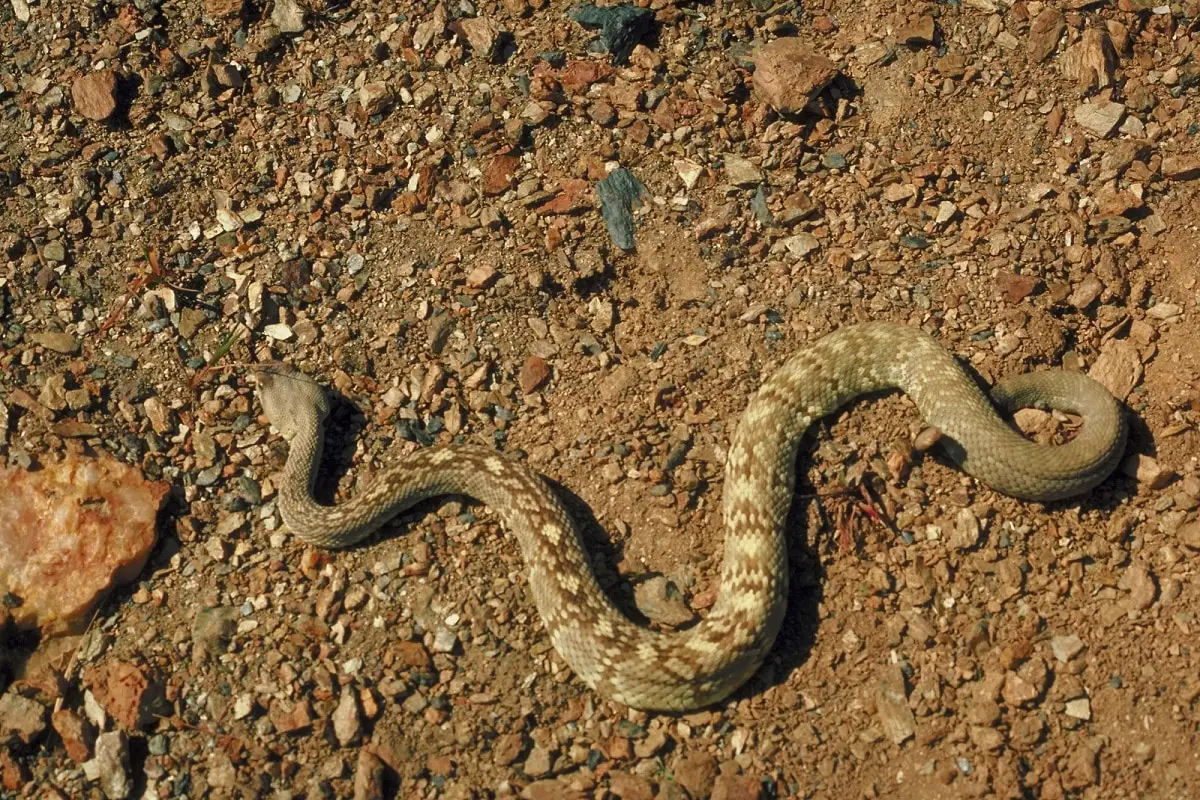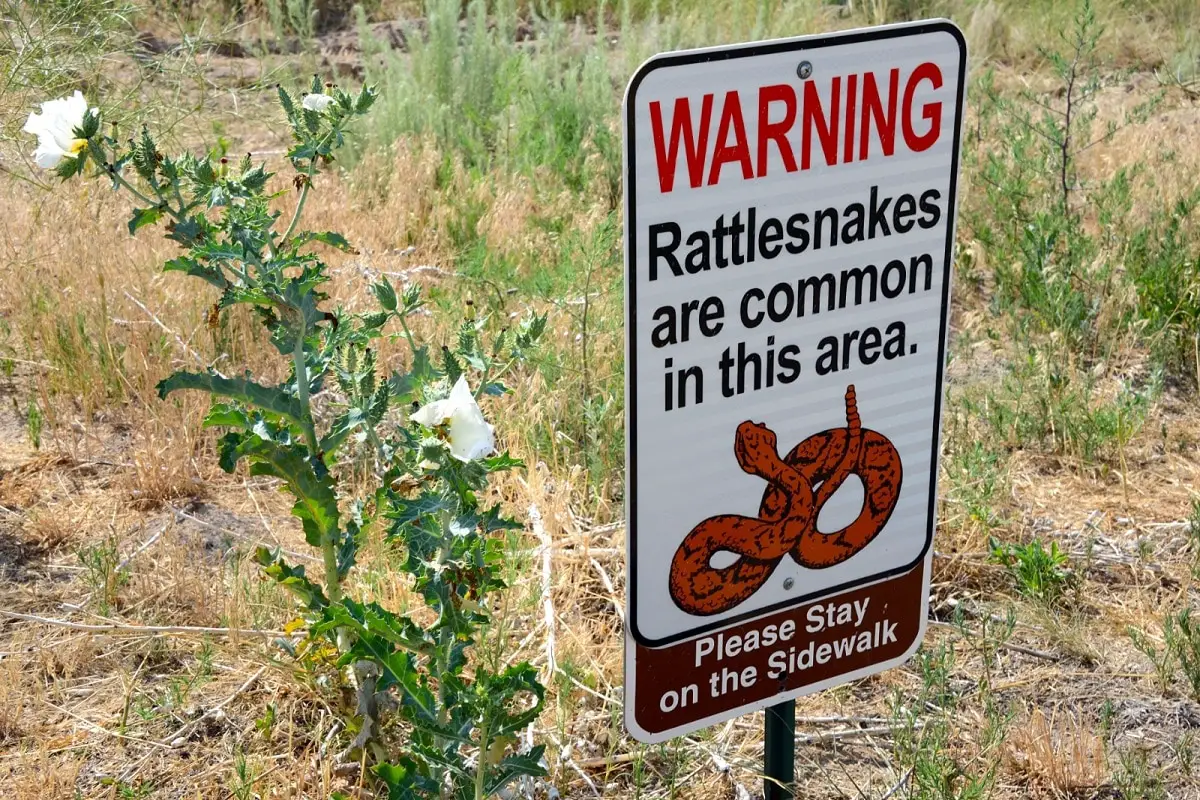Like all living things, rattlesnakes do not live forever, and you may cross a dead one when you are out hiking or walking in parks or open spaces. Believe it or not, but dead rattlesnakes do pose a threat to anyone who manages to get too close. But how much can they actually hurt you? Find out below.
Signs of a Dead Rattlesnake
Like all animals, rattlesnakes eventually die by old age, sickness, or from attack by other animals. Here there are some tell-tale signs that a rattlesnake is dead:
- The tail does not stick up or out but lies flat on the ground.
- Poking the snake with a stick does not bother it.
- You can walk right up to the snake without it hissing or moving away.
- It stays in one place for a long time without moving (hours or days).
- It stays out in the heat or cold weather without moving.
- Part of its body is damaged from a bite from another animal.
Is the Rattlesnake Just Sleeping?
Rattlesnakes are a sedentary type of snake that will lay around waiting for its prey to pass by. This could make them look as if they are dead. The snake could just be laying in wait, sleeping, or brumating (a form of hibernation during cold weather).
It is difficult to tell if a rattlesnake is sleeping to the casual observer. This is because they do not have eyelids, you cannot see their closed eyes when they are in this state. Rattlesnakes have pupils that constrict to block light from coming in. This allows them to sleep when they need to.

A very bright light such as a flashlight could wake a sleeping rattlesnake. When they wake, they may lift their heads and look around to see what is happening. But, if you rouse a sleeping rattlesnake, it could bite you — watch out!
When a rattlesnake brumates in cold weather (a mild kind of hibernation), it will appear dead. If you look closely you may see slight movement or shifting of certain parts of its body. A brumating rattlesnake will move occasionally to stay warm. If you try to poke or pick up a brumating rattlesnake it will certainly move and possibly bite you, so do not attempt to do this.
Can You Pick Up a Dead Rattlesnake?
Rattlesnakes can live in areas that have high human activity, where there are a lot of animals and humans. If you go near these rattlesnakes chances are you will have a rattlesnake encounter. They are strong snakes and they can grow to be over six feet long. Live rattlesnakes pose a significant health risk to both animals and humans due to bites.
You can certainly pick up a dead rattlesnake, but this is not an entirely good idea. If it has not been dead long, it could still squirm out of your hands or even bite you due to remaining nerve impulses.
Never pick up a snake, dead or otherwise, without proper hand protection like animal handling gloves or thick work gloves capable of withstanding the fangs of a rattlesnake.
If you need to move a dead rattlesnake from a certain area, use a long stick, metal pole, or snake handling equipment. You can purchase 52-inch long professional snake handling tongs made of stainless steel and have wide jaws for picking up snakes and reptiles.
If you manage to pick up a dead snake that has been dead for a while, it will hang limply from your hands and you can dispose of it in a nearby trash can.
Useful Snake Tong Grabbers
Ouronehome 60″ Professional All-Aluminum Alloy Snake Tong Reptile Grabber Rattle Snake Catcher
GYORGKSHI 60” Professional Snake Tongs – Extra Long Heavy Duty Snake Catcher Tongs
Ruyarxnm 45” High-Carbon Snake Hook Catcher Stick Tongs Grabber Reptile Pick-up Handling Tool
Is a Rattlesnake’s Venom Still Dangerous After It Dies?
Dead rattlesnakes are still very dangerous. It is possible for a dead rattlesnake to inflict a fatal does of venom on an unsuspecting victim that tried to handle it. Medical treatment in the form of anti-venom in a hospital setting will be required to recover.
The most common way a person is killed or severely injured by a rattlesnake is through a venom injection. This type of venom is injected under the skin, so it goes right into the deeper tissues. Snake venom is responsible for nearly all snakebite deaths and other severe injuries in humans and pets. Some people may be more allergic to venom than others and will have a more intense response to being bitten.
Treating a snake bite from a dead rattlesnake will require vials of antivenom to be administered in a hospital setting by a trained medical professional. The only way to be sure a dead rattlesnake head no longer has venom inside is to drain it fully.
For more information on rattlesnake bites and treatment visit John’s Hopkins Medicine.
To read a story of a man who was bitten by a dead rattlesnake, check out this post in National Geographic.
Venom has a specific chemical makeup that does not degrade for a long time after the snake has died. Even if the venom is somewhat old, it could still have enough potency left to cause illness. It is best to never try to handle a dead snake of any kind without adequate protection or assistance from an animal professional.
Do the Fangs of a Dead Rattlesnake Still Work?
Rattlesnake fangs have venom canals that run the length of the fang to the tip that allow the venom to pass through and into their prey when they bite. These canals do not close when the rattlesnake dies and are still fully capable of carrying any remaining venom.
Rattlesnake have the following physical parts in their heads that make up the fang / venom mechanism:
- Compressor muscle
- Venom gland
- Protective sheath
- Fang
- Secondary Venom duct
- Accessory gland
- Primary venom duct
- Fang venom canal
- Fang protective sheath
- Nerves
Small bits of venom can remain close to the tip of the fangs, inside the venom canal, in any of the venom ducts or glands even after the rattlesnake is dead.
Dead rattlesnakes are capable of biting due to remaining nerve impulses that tighten the snake’s compressor muscles. Like other animals, rattlesnakes can retain their reflexes for hours after death. A dead rattlesnake may behave similarly to a chicken that has its head cut off but still is able to run around. Even if the nerve impulses are no longer active, a person could brush their hand against the fangs and receive a dangerous does of venom if it punctures their skin.
Avoiding Dead Rattlesnakes

Treat a dead rattlesnake as any other live snake. Do not step on them, avoid them when you see them. Do not try to pick them up or handle them without proper equipment and protection. Dead rattlesnakes can still envenomate you, even if they’ve been dead for quite a while. So stay away from the pointy ends of snakes, and stop trying to poke at them for crying out loud.
If there are any signs posted on the pathway or if your hiking map has a warning noted about snake dangers, then mind it. Even if there are no warnings of rattlesnakes for you to see, assume they could be lurking around. Snakes like certain environments, including trees, tall grasses, and warm weather. If you are out and about in the spring and summer months when most animals are active, rattlesnakes could be living nearby.

